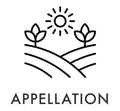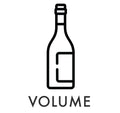Chateau Lafite Rothschild Pauillac 1999 750ml










The 1999 Château Lafite Rothschild is a refined blend of 74% Cabernet Sauvignon, 18.5% Merlot, 6% Cabernet Franc, and 1.5% Petit Verdot. It offers a spicy, woody nose with dark fruit, cigar box, and subtle animal notes. The palate is well-structured and balanced, with a long finish of ripe red fruit. Despite challenging weather conditions, the wine has developed a silky texture and firm tannic grip, drinking well now and with the potential to age for another 15–20 years.
Decanter | D 94
Published: Mar 1, 2022
Drink: 2022-2042
At this stage, there is sweet fruit and spice on the nose and a texture that seems silky, supple, and soft initially but shows a firm tannic grip at the end. It drinks well now and should last for the mid-term. A lovely wine from a less-than-promising year. The weather was humid and cloudy early and very hot from the middle of August, but the rain arrived at the end of the month, pushing up the picking date. 40% of the fruit went into the grand vin, a blend of 74% Cabernet Sauvignon, 18.5% Merlot, 6% Cabernet Franc, and 1.5% Petit Verdot – one of the few vintages to feature four grape varieties.
The Wine Advocate | RP 93
Published: Mar 1, 2022
Drink: 2009-2039
The 1999 Lafite Rothschild is entering adolescence and beginning to show very well after an hour in the decanter. Offering up aromas of rich dark fruit mingled with cigar box, loamy soil, spices and subtle animal top notes. Medium to full-bodied, muscular and concentrated for the vintage, with lively acids and still rather youthfully assertive tannins, it'sa fine effort that would rate higher if it displayed greater aromatic purity.
Jancisrobinson.com | JR 18
Published: May 30, 2018
Drink: 2017-2035
'A fine vintage for the end of the millennium, barely disturbed by a few drops of rain during harvest. The previous winter had been mild, as during most of the decade, followed by a beautiful spring and early flowering. In July and until mid August, wet days with sparse sunshine, but fortunately, from 15 August and until the rainy harvest, there was a heatwave. At the time, we were already talking about global warming because the average dates for flowering and harvest in the 1990s were about ten days ahead of those in the 1970s.' Unusually this often-overlooked vintage (in general for bordeaux) contained all four grape varieties planted at Lafite: Cabernet Sauvignon, Merlot, Cabernet Franc and Petit Verdot. Eric Kohler told us that this is true of only four of the 24 vintages with which he has been involved.
Mid crimson/garnet. Such perfume and Lafite aroma! No obvious sweetness but real lift and delicacy. Racy Lafite character on the palate; this dances. Real class with some velvety texture and a bone-dry finish. Very clean and pure. It reverberates on the end – thanks to the Indian summer, we were told. Apparently this was chosen for the 150th celebration tasting because it has really started to open out since 2016.
lafite.com
1999 vintage
1999 was an early year, which meant we were kept rather busy throughout the vines growth period. This was “enlivened” by numerous technical challenges, that proved interesting to solve. The winter was mild like almost all the others in the decade and was followed by a beautiful spring and an early flowering.
From July to mid-August, the days were relatively damp and characterized by parsimonious sunshine.
The harvests took place very quickly (over 10 days) from 21 September to 2 October, during a fairly wet period. But technical progress has allowed us to understand that grapes, provided they are thoroughly ripe, which was the case after the superb September, can be harvested in the rain without coming to any harm. The harvest was carried out by hand and sorted with a reinforced team of pickers (over 420 people).
Location
Pauillac is located on the left bank of the Gironde estuary, approximately 40km North of Bordeaux. With the tempering influence of the estuary and a great diversity of soils originated from both the Massif Central and the Pyrenees, Pauillac boasts exceptional climatic and geological conditions to make outstanding wines.
Terroir
Chateau Lafite Rothschild is located to the north of the appellation, bordering Saint Estèphe. Lafite's best terroirs stretch on the 50ha Plateau des Carruades to the west of the Château. This plateau, which is the highest point of the Pauillac appellation, is well-drained and enjoys optimal sun exposure. Its clayey gravel soils offer excellent water regulating abilities, and provide optimal ripening conditions for the Cabernet Sauvignon.
Some 4.5 ha planted in the neighbouring Saint Estephe appellation, count amongst the oldest vines of the property and provide year after year grapes of outstanding quality for the Grand Vin.
Winemaking
In order to reveal the magic of Lafite’s terroir, every step of the wine elaboration is carried out with the greatest precision. Depending of their provenance and level of ripeness, grapes will be transferred into either wooden, stainless steel or concrete vats. Alcoholic fermentation is conducted at controlled temperature, with regular pumping over to gently release all the phenolic compounds in the grapes. Each vat is carefully monitored and tasted daily in order to determine the best racking time. The maceration period variesfor each tank but is around 20 days in total.
After malolactic fermentation wines are transferred into French oak barrels. Lafite has its own cooperage in Pauillac, la Tonnellerie des Domaines, which contributes to its unique style. The selection for the grand vin is made in March, once the wines have settled and start revealing their full potential. Every barrel is tasted individually and only the best ones are set aside for the final blend.
Once blended, the wine is aged for a further 15 months in barrels, primarily of new oak.
Grapes
74 % Cabernet sauvignon
6 % Cabernet franc
18,50 % Merlot
1,50 % Petit verdot
Tasting
The wine was made with four grape varieties, which is relatively rare (Cabernet Franc and Petit Verdot hardly ever appear together in the grand vin).
This vintage has a pleasantly woody, spicy nose; the palate is structured and well balanced, gradually increasing in power with great elegance; the finish is long and characterized by very red, ripe fruit.

